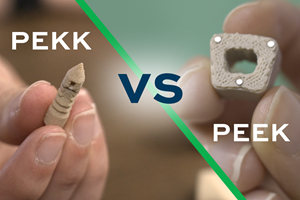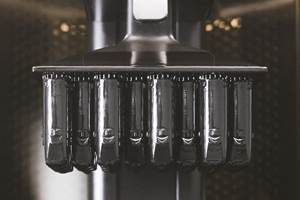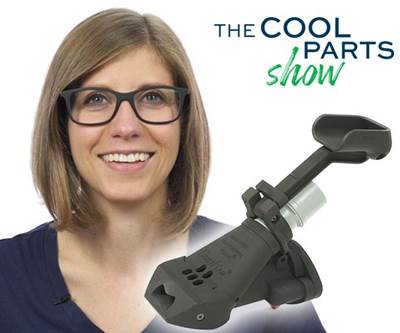How Additive Manufacturing Is Expanding the Possibilities for Plastics
In terms of lead time, part size, quantity and inventory needs, the limitations on plastics are being overcome. We will see plastics doing more — the theme of several recent articles we’ve posted.
I recently spoke with the leader of a home-repair product company who has been watching the advance of additive manufacturing (AM), waiting for it to reach the level of cost-effectiveness to make it the answer for his company’s production.
“I never want to buy another injection mold again,” he says.
He will probably have to. His company’s products are sold in retail stores. Sales are price sensitive. Right now, only injection molding performed overseas lets his company attain sufficiently low unit cost on plastic parts. For various reasons, he would rather produce in the U.S. Just one of them is this: Molding by a distant supplier comes with long lead times, and lead time equals risk.
He tells a story about how great that risk can be. Over a decade ago, the company increased production of a product for paint removal in light of a government regulation, but then that regulation was repealed. “We couldn’t shut off the production for parts already on the water,” he says. The company is still sitting on inventory of this product.
But with AM, there would have been a very responsive production shutoff. Requiring no tooling and little labor, polymer AM can shift between part numbers nimbly and it can be run nearby for about the same cost as running it far away. Had plastic 3D printing been the process, the company could have ceased production on the very day it learned of the regulation change. And this point highlights one of the most significant consequences of the advance of AM. Namely, with plastics, there is now a “mold or print” choice for production parts. The existence of this choice will expand what plastics can do.
For example, the hope of plastic part production without burdensome lead time or quantity requirements is already being realized for a product that is less price sensitive. Designer lighting is now available to consumers in as many options as designers can conceive, thanks to a process by Gantri in which parts are made additively not quite on-demand, but nearly so. Or, a more purely functional example of low-quantity, short-lead-time production involves telecommunications parts made by Boyce Technologies. Meanwhile, the advance of AM makes large plastic parts more practical as well, and the options here are also increasing.
One global company responding to the change in possibilities for plastics is GKN. This contract manufacturer associated with metal part production in aerospace and automotive just bought a company successful in AM for plastics. Another, smaller contract manufacturer seeing the change is Linear AMS. The firm that started as a moldmaker is a mold shop no more, tacking instead toward an additive future.
But then there is the chance to leave contract manufacturers behind. DustRam, supplier of a product by and for construction professionals, illustrates this. DustRam used to outsource manufacturing, but now does it in-house thanks to polymer AM and the replacement of machined metal components with plastic parts made through 3D printing. In an episode of our video series, the founder talks about this.
And this opportunity — to not only reshore but also bring manufacturing in-house — is one my friend making home-repair products also sees. Because the company has not performed its own part making to date, it is more ready than others to make the move to AM. “We have no legacy manufacturing capability to account for,” he says. The company is ready to commit. This is the same position DustRam was also in. Where will plastics production go with AM? In some cases, it will go into companies that previously have not been manufacturers before.
Related Content
Solving 3D Printing’s Hidden Problem: Vibration
Ulendo’s vibration compensation software can double the speed of FFF 3D printers while maintaining part quality, all without changing the machine’s hardware.
Read MoreUnderstanding PEKK and PEEK for 3D Printing: The Cool Parts Show Bonus
Both materials offer properties desirable for medical implants, among other applications. In this bonus episode, hear more from Oxford Performance Materials and Curiteva about how these companies are applying PEKK and PEEK, respectively.
Read MoreActivArmor Casts and Splints Are Shifting to Point-of-Care 3D Printing
ActivArmor offers individualized, 3D printed casts and splints for various diagnoses. The company is in the process of shifting to point-of-care printing and aims to promote positive healing outcomes and improved hygienics with customized support devices.
Read MoreAM 101: Digital Light Synthesis (DLS)
Digital Light Synthesis (DLS) is the name for Carbon's resin-based 3D printing process. How it works and how it differs from stereolithography.
Read MoreRead Next
3D Printed Plastic Replaces Metal: The Cool Parts Show #3
This small business owner discovered 3D printing as a way to manufacture his invention. Now, AM is enabling a totally new source of revenue. Watch The Cool Parts Show to see how.
Read MoreGantri’s 3D Printed Luxury Lighting Brings Designers Closer to Consumers
The San Francisco startup is changing designer lighting with a designer-forward online marketplace and just-in-time delivery enabled by 3D printing.
Read MoreWhat A Former Moldmaker Has Learned About AM: Leverage Simplicity and Let It Scale
The once-again independent Linear AMS is now more focused on additive manufacturing than ever before.
Read More

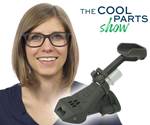

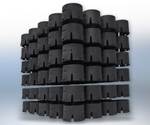





.png;maxWidth=300;quality=90)







